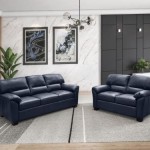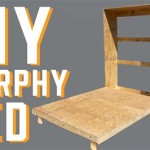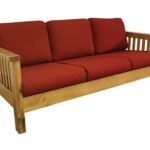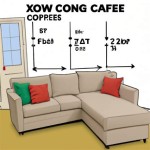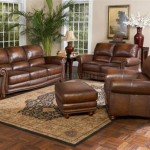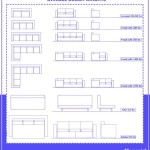Daybed Sofa Couch: Versatility and Appeal in Modern Living
The daybed sofa couch represents a unique furniture category that bridges the gap between a traditional sofa and a bed. Its appeal stems from its multifunctional nature, offering seating during the day and a comfortable sleeping space when needed. This adaptability makes it a particularly valuable addition to smaller living spaces, guest rooms, and home offices.
While the core concept remains consistent, the design and construction of daybed sofa couches vary significantly, catering to diverse aesthetic preferences and functional requirements. Understanding these variations is crucial when selecting a daybed sofa couch to ensure it aligns with individual needs and complements existing decor.
The incorporation of a daybed sofa couch into a home can enhance both its practicality and its visual appeal. It offers a seating solution that is less formal than a traditional sofa, fostering a relaxed and inviting atmosphere. Simultaneously, its ability to transform into a bed provides a convenient and space-saving alternative to a conventional guest bed.
Exploring Different Daybed Styles
The market offers a wide array of daybed styles, each characterized by distinct features and design elements. Differentiating between these styles is essential for making an informed purchase decision.
One common style is the traditional daybed, often featuring a classic design with a prominent back and side arms. These models are typically upholstered in fabric, offering a comfortable and inviting seating experience. Traditional daybeds often incorporate decorative details, such as tufting or nailhead trim, adding to their aesthetic appeal.
Another popular style is the platform daybed, which emphasizes a minimalist and contemporary design. These daybeds typically feature a low platform base and a simple headboard, creating a clean and uncluttered look. Platform daybeds are often constructed from wood or metal, offering durability and stability. They are particularly well-suited to modern and Scandinavian-inspired interiors.
Convertible daybeds represent a third distinct style. These models are designed to easily transition between a sofa and a bed, often incorporating mechanisms such as pull-out trundles or folding frames. Convertible daybeds are an excellent choice for maximizing space and providing flexible sleeping arrangements. They are particularly useful in apartments or smaller homes where space is limited.
Beyond these common styles, daybeds can also be categorized by the presence or absence of arms and backs. Some daybeds feature a full back and arms, providing comprehensive support and creating a more enclosed seating area. Others feature only a partial back or no back at all, offering a more open and airy feel. The choice between these options depends on personal preference and the intended use of the daybed.
The selection of a daybed style should be carefully considered, taking into account the overall aesthetic of the room, the available space, and the desired functionality. A well-chosen daybed can seamlessly integrate into its surroundings, enhancing both the comfort and the visual appeal of the space.
Material Considerations for Daybed Sofa Couches
The materials used in the construction of a daybed sofa couch significantly impact its durability, comfort, and overall aesthetic. Careful consideration should be given to the frame material, the upholstery fabric, and the cushioning fill.
The frame of a daybed provides its structural support, and the choice of material is crucial for ensuring its long-term stability. Wood frames, particularly those constructed from hardwoods like oak or maple, are known for their strength and durability. Metal frames, typically made from steel or iron, offer a contemporary look and are also highly durable. The selection of frame material should be based on the desired aesthetic and the expected level of use.
The upholstery fabric plays a vital role in the comfort and appearance of a daybed. A wide range of fabrics are available, each with its own unique characteristics. Natural fabrics, such as cotton and linen, are breathable and offer a comfortable feel. Synthetic fabrics, such as polyester and microfiber, are more resistant to stains and wear. Leather upholstery provides a luxurious look and is highly durable, but it requires more maintenance.
The choice of upholstery fabric should be based on personal preference, lifestyle, and the expected level of wear and tear. Homes with children or pets may benefit from stain-resistant fabrics, while those seeking a more luxurious feel may opt for leather or velvet.
The cushioning fill also plays a crucial role in the comfort of a daybed. Common fill materials include foam, feathers, and fiberfill. Foam provides firm support and is relatively inexpensive. Feather fill offers a plush and luxurious feel but requires more maintenance. Fiberfill is a synthetic alternative that is hypoallergenic and easy to care for.
The density and type of cushioning fill should be carefully considered to ensure the desired level of comfort and support. A higher density foam will provide firmer support, while a looser fill will offer a softer and more relaxed feel.
In addition to the primary materials, other components, such as springs and webbing, also contribute to the overall quality and comfort of a daybed. High-quality springs and webbing provide proper support and prevent sagging, ensuring long-term comfort and durability.
A thorough understanding of the materials used in a daybed is essential for making an informed purchase decision. Choosing high-quality materials will ensure that the daybed is both comfortable and durable, providing years of enjoyment.
Maximizing Functionality and Style
The true appeal of a daybed sofa couch lies in its ability to seamlessly blend functionality and style. To maximize its benefits, careful consideration should be given to its placement, accessorization, and overall integration into the room's design.
The placement of a daybed is crucial for optimizing its functionality. In a small living space, a daybed can serve as both a sofa and a guest bed, freeing up valuable floor space. In a guest room, it can provide a comfortable and inviting sleeping area without the need for a traditional bed. In a home office, it can offer a comfortable place to relax and take a break during the day.
Proper accessorization can enhance both the comfort and the style of a daybed. Throw pillows and blankets can add warmth and visual interest, while also providing extra support for lounging. A side table placed next to the daybed can offer a convenient surface for drinks, books, or other essentials. A well-placed rug can anchor the daybed and define the seating area.
The overall integration of the daybed into the room's design is essential for creating a cohesive and harmonious look. The color and style of the daybed should complement the existing furniture and decor. The scale of the daybed should be appropriate for the size of the room. Thoughtful consideration should be given to the lighting and artwork in the surrounding area.
Beyond its functional and aesthetic benefits, a daybed can also serve as a focal point in a room. By selecting a daybed with a unique design or incorporating it into a creative arrangement, it can become a conversation starter and a reflection of personal style.
The addition of storage elements can further enhance the functionality of a daybed. Some daybeds feature built-in drawers or shelves, providing convenient storage for bedding, books, or other items. This is particularly useful in smaller spaces where storage is limited.
Ultimately, the key to maximizing the functionality and style of a daybed sofa couch lies in careful planning and attention to detail. By considering the specific needs of the space, the desired aesthetic, and the available accessories, a daybed can be transformed into a versatile and stylish addition to any home.
The daybed sofa couch offers a compelling combination of comfort, functionality, and style, making it a valuable addition to a variety of living spaces. By understanding the different styles, materials, and integration strategies, individuals can select a daybed that perfectly meets their needs and enhances their home environment.

Small Home Style The Sofa Daybed Katrina Blair Interior Design Modern Livingkatrina
Sigmund Double Daybed

Day Bed Sofa Light Sand Fabric Four Hands Furniture

12 Of The Prettiest Daybeds For Sitting Sleeping And Lounging In Style Daybed Room Mattress Sofa Bed Queen

Stacked Sofa Daybed Furniture Jaxx Alon

How To Choose Between A Daybed Or Sleeper Sofa Pottery Barn

Diy Caned Sofa Daybed Megan Bell

10 Best Day Beds To In 2024 Daybeds

Full Size Daybed With 2 Storage Drawers Upholstered Platform Bed Frame On Tufted Backrest Nailhead Trim Sofa For Living Room Bedroom Mattress Not Included Gray Com

Linen Fabric Daybed Grey Sofa Bed With Underbed Trundle Living Room Bedroom Furniture Guest Day Sofabed 2 Mattresses Diy At B Q
Related Posts


